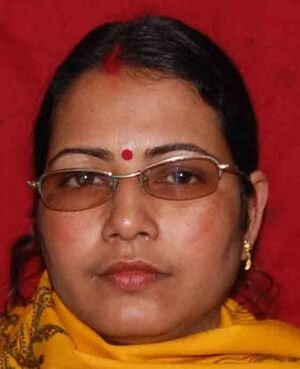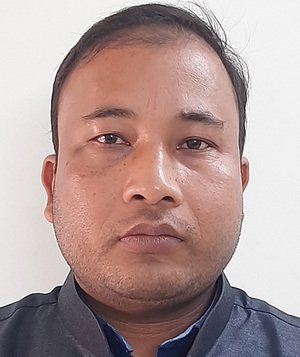Sociology
Our Departments
Announcements
1st Sem Physical Verification of documents
1st sem students find your Reg No. & Fill Examination Form
2nd 4th & 6th Semester Offline Classes Start on 07-03-2022
2nd Sem Marksheets Distribution
About The Department
Courses Offered
Sociology as Generic Elective (GE) course for other Honours subjects in 3rd and 4th semester. Beside this, GE course is also for 5th and 6th semester BA Program course students.
Sociology as Discipline Specific Core (DSC) from paper I to IV is taught for 1st to 4th semester and DSE (Discipline Specific Elective) Paper I and II is taught for 5th and 6th semester program students.
Sociology as SEC (Skill Enhancement Course) is taught for 3rd and 4th Semester B.A. Honours students & Program DSC1 students. It also offered for DSC2 5th and 6th semester Program students.
Departmental Resources
The department gives students access to a number of academic resources:
Stock of textbooks and reference books in the Departmental and Central Library.
E-Bank of digital books
Departmental YouTube channel.
Departmental Lecture Series- Click here
Debates, seminars, talks, and extempore sessions are regular features of the department’s academic calendar, enriching students’ critical thinking skills and fostering a spirit of intellectual inquiry. Internal assessments, conducted in various forms, serve as a comprehensive measure of students’ progress and understanding, ensuring continuous evaluation and feedback.
Notably, the Department of Bengali stands out for its proactive approach to assessment, conducting the highest number of tests in the college. This rigorous evaluation mechanism reflects the department’s unwavering commitment to academic excellence and its relentless pursuit of student success.
In conclusion, the Department of Bengali at Siliguri Mahila Mahavidyalaya stands as a beacon of academic excellence and cultural enrichment, nurturing the minds of students and equipping them with the knowledge, skills, and values to thrive in an ever-changing world. With a rich legacy of accomplishments and a steadfast commitment to innovation and excellence, the department continues to inspire and empower generations of learners, shaping the future leaders of tomorrow.
Objectives
1. Cultural Appreciation
Bengali literature offers a profound insight into the rich cultural heritage, traditions, and ethos of the Bengali-speaking people. By studying Bengali literature, students gain a deeper appreciation for the diverse cultural nuances embedded within the language, fostering cross-cultural understanding and respect.
2. Language Proficiency
Bengali literature serves as a linguistic resource for students to enhance their proficiency in the Bengali language. Through exposure to a wide array of literary genres, styles, and linguistic expressions, students develop a nuanced understanding of Bengali grammar, vocabulary, and syntax, thereby strengthening their language skills.
3. Aesthetic Appreciation
Exposure to the literary masterpieces of Bengali literature cultivates students' aesthetic sensibilities and fosters an appreciation for artistic expression. Through the exploration of poetic imagery, narrative techniques, and rhetorical devices, students develop a discerning eye for beauty, creativity, and artistic innovation.
4. Literary Analysis & Interpretation
Studying Bengali literature hones students' analytical and critical thinking abilities as they dissect and interpret complex literary texts. By analyzing themes, characters, motifs, and literary devices, students learn to discern deeper meanings, contextualize historical and social influences, and appreciate the intricacies of narrative structures.
5. Cultural & Historical Context
Bengali literature provides a window into the socio-political, historical, and cultural milieu of Bengal across different epochs. Through the study of literary works spanning various periods, students gain insights into the evolution of Bengali society, its triumphs, challenges, and transformations, thus fostering a holistic understanding of regional history and identity.
6. Identity Formation
Bengali literature plays a pivotal role in shaping individual and collective identities, offering diverse narratives and perspectives that resonate with readers' personal experiences and cultural backgrounds. By engaging with literary works that reflect themes of identity, belonging, and self-discovery, students embark on a journey of introspection and self-awareness, enriching their sense of cultural identity and belongingness.
Outcomes
- Siliguri Mahila Mahavidyalaya
- Siliguri Mahila Mahavidyalaya
- Siliguri Mahila Mahavidyalaya
- Siliguri Mahila Mahavidyalaya
- Siliguri Mahila Mahavidyalaya
1. Cultural Awareness
By delving into the rich tapestry of Bengali literature, students develop a profound appreciation for the cultural heritage, traditions, and values of the Bengali-speaking community. They gain insights into the historical, social, and cultural contexts that have shaped Bengali identity, fostering cross-cultural understanding and empathy.
2. Language Proficiency
Immersion in Bengali literary texts enhances students' language proficiency, enabling them to communicate effectively and confidently in Bengali. Through exposure to diverse linguistic styles, vocabulary, and grammar structures, students develop a nuanced command of the language, facilitating both written and oral expression.
3. Critical Thinking Skills
Analyzing complex literary works hones students' critical thinking abilities, enabling them to evaluate ideas, discern themes, and interpret textual nuances. By engaging with diverse perspectives and exploring the underlying messages of literary texts, students cultivate a deeper understanding of human nature, society, and the human condition.
4. Aesthetic Sensibility
Exposure to the aesthetic beauty of Bengali literature nurtures students' aesthetic sensibilities, fostering an appreciation for literary craftsmanship, poetic imagery, and narrative artistry. Through the exploration of vivid descriptions, evocative language, and emotive storytelling, students develop a discerning eye for artistic expression and creativity.
5. Cultural Identity
Studying Bengali literature nurtures a sense of cultural identity and belonging among students, connecting them to their linguistic and cultural roots. By engaging with narratives that reflect their own lived experiences and cultural heritage, students develop a deeper understanding of their place in the world, fostering a sense of pride and belongingness.
6. Personal Growth
Ultimately, the study of Bengali literature promotes personal growth and self-discovery, empowering students to explore existential questions, navigate moral dilemmas, and grapple with the complexities of the human experience. Through the vicarious experiences of literary characters and the introspective reflections of authors, students embark on a journey of self-awareness, empathy, and intellectual growth.
Result (Last Five Years)
| Sl. No. | Name | Designation |
|---|---|---|
| 1 | Dr. Dil Kumar Pradhan | Teacher-in-Charge, Convener |
| 2 | Sri Dipankar Bhaumik | Teachers’ Representative |
| 3 | Sri Hridkamal Sarkar | Teachers’ Representative |
| 4 | Smt. BratatiSaren | Teachers’ Representative |
| 5 | Smt. Asha Lama | Secretary, Teachers’ Council |
Faculty Members
SACT-1 || Dept. of Bengali
Contractual Teacher || Dept. of Bengali
Assistant Professor || Dept. of Bengali
Assistant Professor || Dept. of Bengali
Associate Professor || Dept. of Bengali







